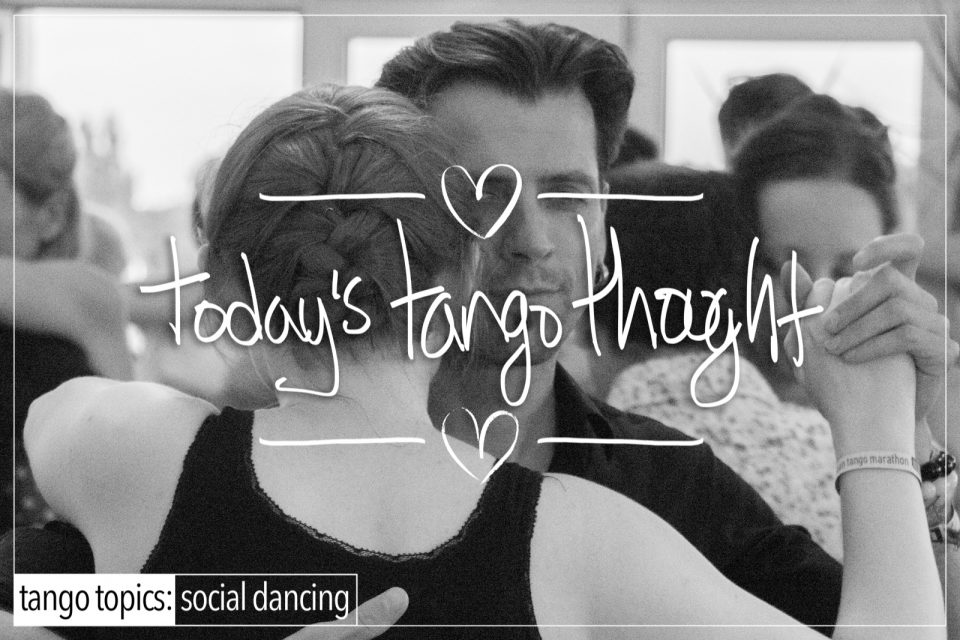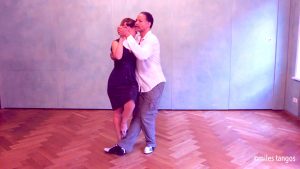All too often a good portion of Followers get the short end of the stick as it were. They’re blamed for missing this or that, not having enough resistance (a major no-no), not pushing, not leaning enough (false apilodo another major no-no), not stepping in the right place, not keeping up with the lead, etc. They’re blamed for a host of things from walking, to musical interpretation. After a while they develop a complex of just taking responsibility for almost everything that happens that isn’t desirable in the dance, instead of the Lead taking rightful responsibility for what’s been led! This is known as ‘Bashing The Follower’. Ask yourself this question Followers, if you’re being honest about what you felt, and it’s clear that you felt X, then why on earth are you apologizing for it ? At the same time from a Leading perspective, if you led X, and the Follower felt Y, and clearly does Y and when you intended X, why are you growling at them ? Especially when the issue is that your idea of that specific lead to do X which is not entirely clear for that Follower. So blaming them is not going to go over all that well. This is, again, known as “Bashing The Follower”.
Is this desirable behavior ? No. Is it what happens ? Yes. Are you going to continue to do this no matter what ? Yes. Is there a way to stop it ? Yes. How ? Fix the L/lead. 90% of the time the problem is with how the lead is invoked! Fix that, and automagically problems start to disappear. There is another way to fix this problem and it comes from the Follower’s side of the equation: Stop accepting their cabeceo! But that’s a whole different thought for a different day. Most L/leads don’t want to hear that part. That they could be rejected because their lead is not desirable. Their egos would shatter into a million tiny pieces.
To be fair the Follower does have issues. Don’t mishear this as the Follower is all perfect. Not by any stretch of the imagination. They have their issues, as noted here, here, here, here, here, here, here, here, and here just to name a few. However, you as a Lead need to collectively get your sh*t together, as indicated here, here. here, here, here, here, here, here, here, and here just to name a few. This site, and the requisite videos/articles points out the issues with both roles, not one over the other. This stuff is a lot to take in all in one bi/yte. and it’s hard enough with just one role to hear just one piece of the topic, where there are multiple issues that need to addressed. (see also: Lead Bashing)
The Tango Topics Opinion: Should the Follower be ‘bashed’ for following what they were led to do ? In our opinion, this is a categorical “NO, they should not”. However that’s typically not what happens. The Follower is continually blamed and shamed, and apologizes for what they were led to do. And frequently the Follower quite honestly blames themselves for missing something that they weren’t even led to do. They second guess themselves and end up in a withering mess of “I’m sorry” over and over and over again. When in fact the issue on the table is that the Lead didn’t lead the Follower as clearly as they needed to in the first place. Typically what happens is the Follower is put in the role of having to read the Lead’s mind and thereby have to guess what was intended. Sometimes they’re right, and sometimes they’re wrong. It’s a good dance for some Followers if they don’t have a rash of “I’m sorry” in the dance. Some Followers just move on and don’t even bother with the apology at all. Which, quite honestly is the way to go. The apology is a distraction from the execution of what may come next. Truthfully the apology that happens is more of an interruption more than anything else. It interrupts the flow of the partnership. And by that time, it’s too late. The reality is that the Lead has already blamed, shamed, or bashed the Follower for their perceived ineptitude. When in fact was no Follower ineptitude to begin with. It was the Lead’s fault the entire time.
Let’s be clear about something here, there are times when it is solely or squarely the Follower’s fault. When they genuinely miss something. And in that instance, yes you can take responsibility for yourself. However, to take responsibility for not being able to read someone’s mind and to infer what was led is a bit a stretch, yet this is precisely what happens.
That said, YMMV, and your vantage point may vary, but here’s something to try, the next time that the “I’m sorry” thing happens, and it will, stop in that moment and be honest and ask the following question: What are you apologizing for ?
Thanks for reading.











